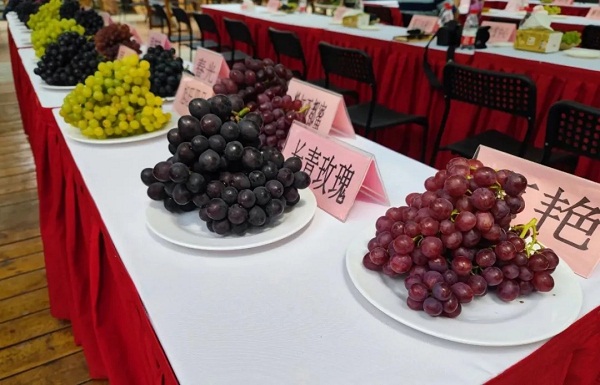
Different types of Malu grapes are on display. [Photo/WeChat ID: sh-jiading]
The town of Malu in Shanghai's Jiading district began growing grapes in 1981. Due to continuous efforts to improve its growing methods, the town now has 3 million hectares of planting areas that produce more than 70 varieties of the fruit.
The main varieties of the grape are Jufeng, Tengren, seedless Baijixin, Rizamat, pink Yadumi, August, giant rose, autumn red, Xile and Jingya.
Because of their popularity and high quality, grapes grown in Malu are protected by a geographical designation issued by the State Administration for Industry and Commerce in 2014. The designation prohibits the use of the name Malu for grapes produced elsewhere.
Malu grapes won the gold prize for the Shanghai Best Grape Competition in 2001 and passed Shanghai's highest farm product certification in 2002. The town was also dubbed "China's Land of Grapes" by the Ministry of Agriculture in 1999.
Malu is the growing area for grapes, and the Malu Vineyard is the experimental and growing base of the Malu Grape Institute. The Malu Grape Theme Park is an experimental garden for agriculture-based tourism in China.
In keeping with the rapid development of the grape industry, Malu established Grape Development Ltd and built a production base spanning 666,666.67 hectares in 2003. The town then established the Malu Grape Specialized Cooperative in 2004 with the aim of boosting common prosperity in the town.

